The Lucky Charm’s route onward from Big Bend was “bordering” the U.S./Mexico line, inspiring today’s blog theme as we looped our way down to the south, heading to the Padre Island seashore.
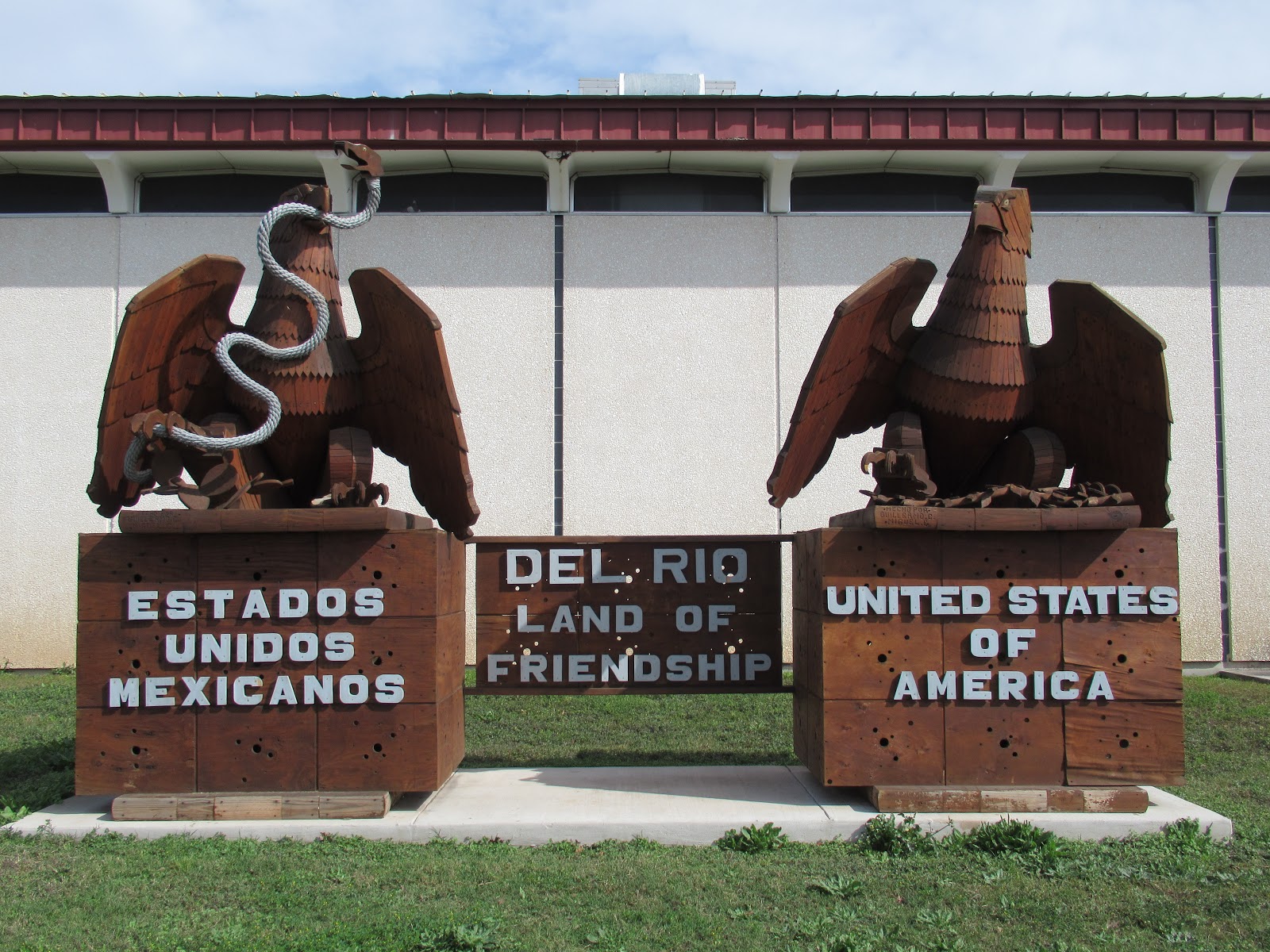
It is an interesting time to be in this part of the world, with the rhetoric about the building of Trump’s wall rising to a crescendo on both sides of the argument. What it means to be a citizen of the world is under the microscope (here and elsewhere), and being near some of the locations at the heart of the debate is stirring.
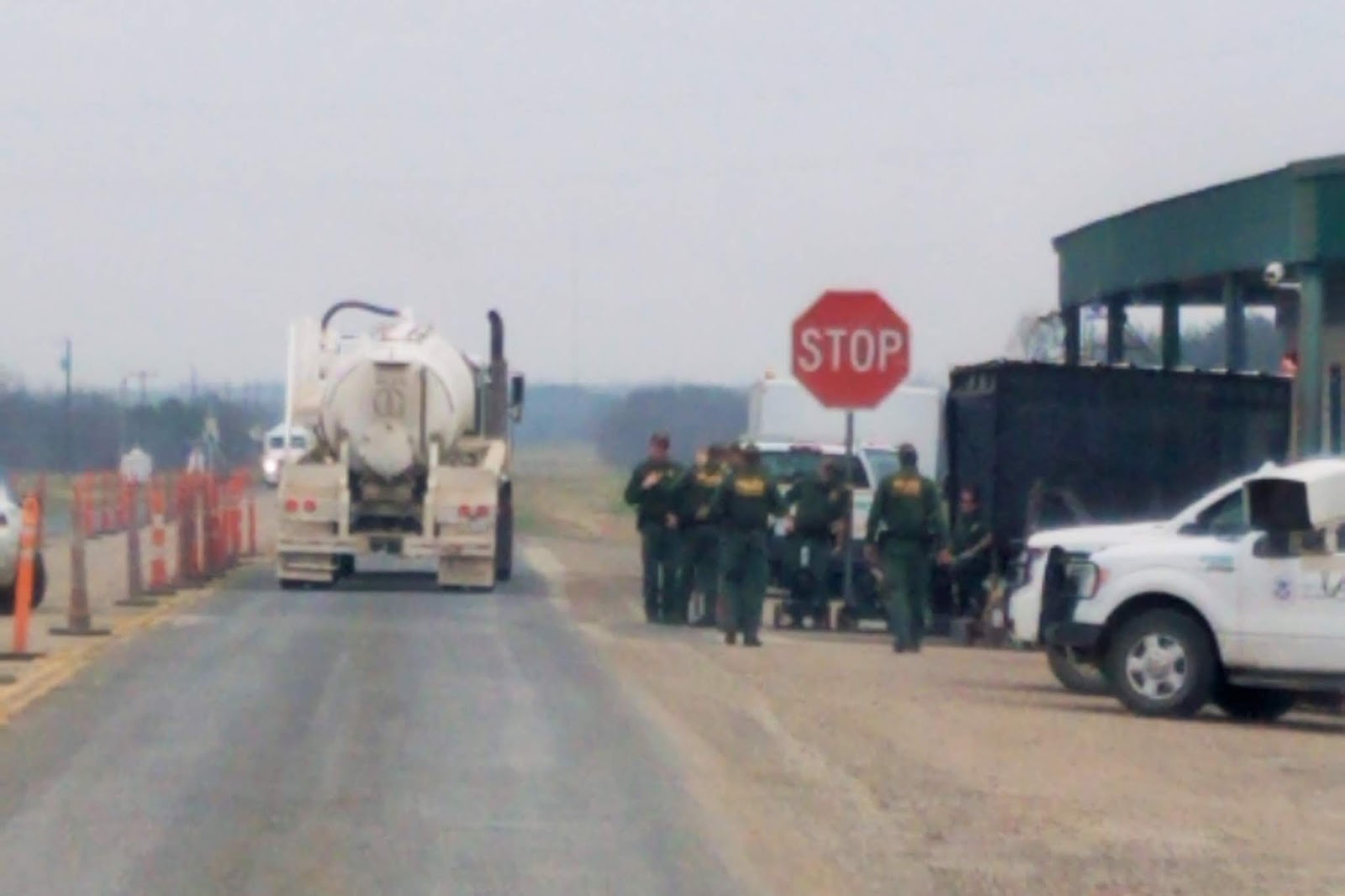
The questioning at multiple border checkpoints is much more pointed, and more than once we have had agents and dogs inspecting our towed Jeep for stowaways. In fact, we were driving through Eagle Pass, Texas, on the exact day a 1,900-person caravan was arriving at the border from Honduras. The show of force on the U.S. side was dramatic, with literally hundreds (thousands?) of border patrol vehicles spaced out about every quarter mile for vast stretches of the highway.
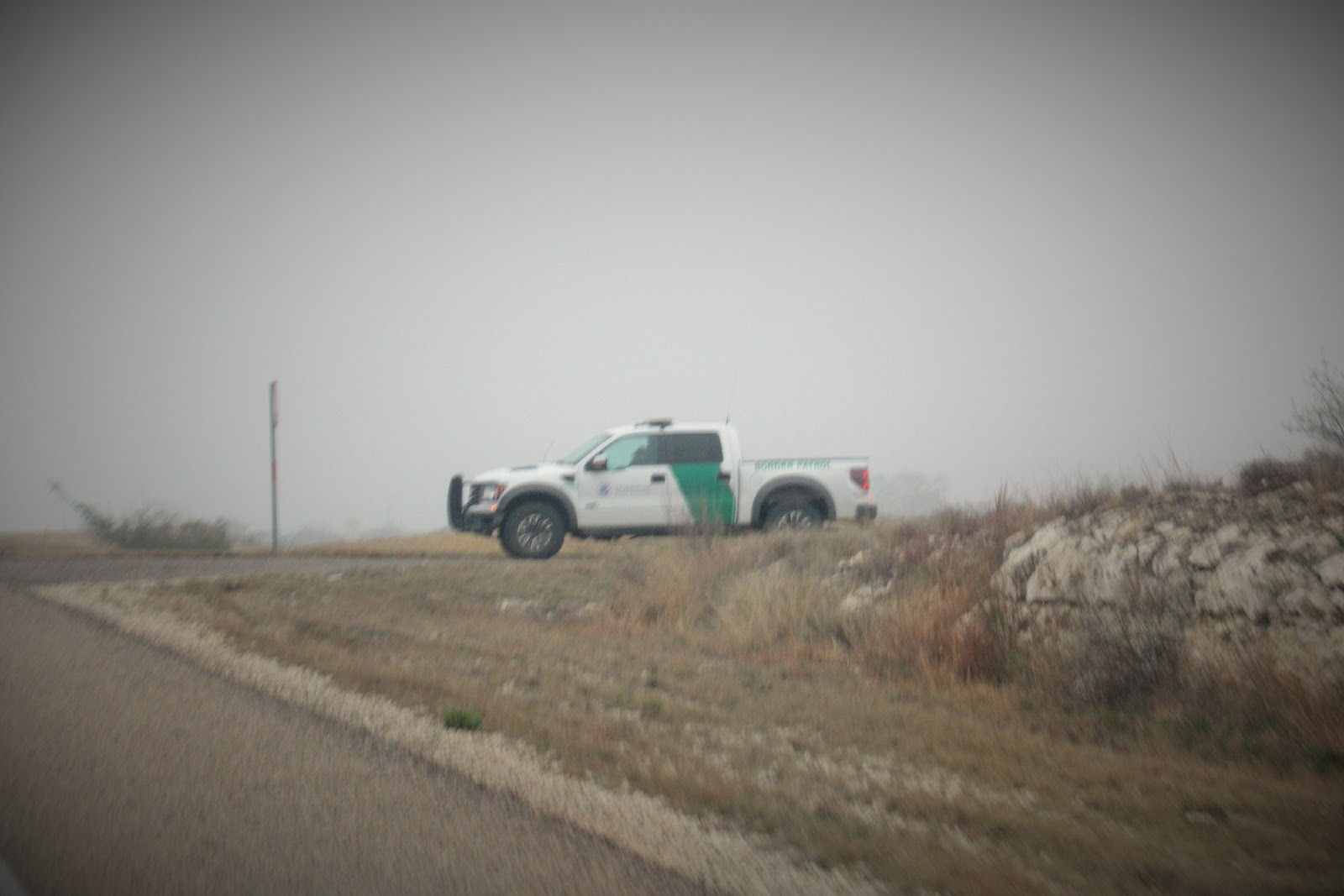
Our stop in the border town of Del Rio was a “business” stop … meaning the business of getting a haircut, filling prescriptions, stocking up on groceries and supplies, and more. But the border between business and fun is very flexible, so we snuck in a wine-tasting visit to Texas’ oldest winery, in continuous operation by generations of the same family since 1883.

Winery founder Frank Qualia crossed borders of his own, arriving in Del Rio from Milan, Italy in 1881. How foreign the new terrain must have seemed to this young immigrant! He and his wife planted vineyards and olive trees in the Old Country tradition and his descendants still own the winery today. We raised a glass in appreciation of their success. Also, cuz we were thirsty.

You know there’s a story or two that necessitated this sign ….
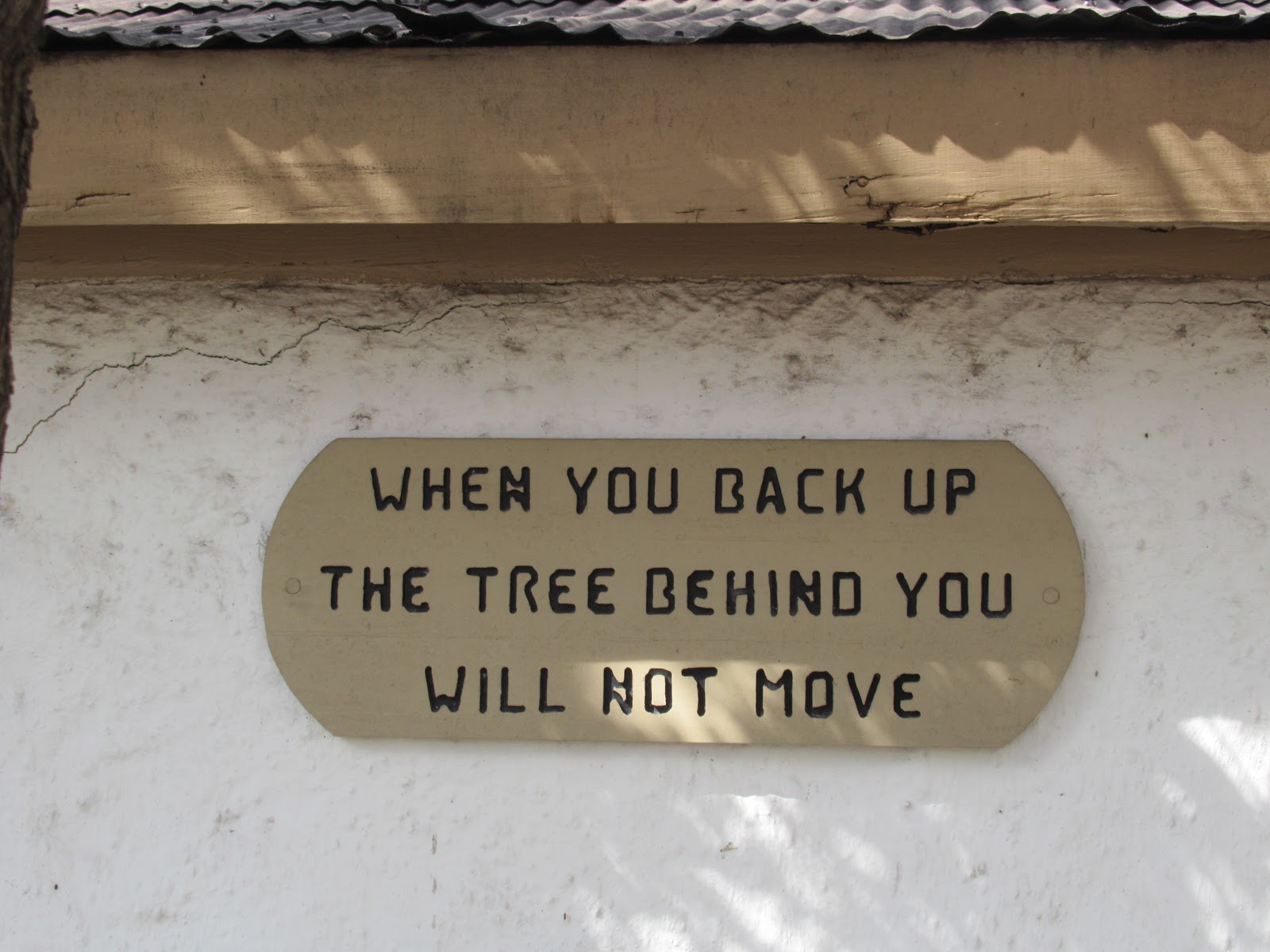
In the border town of Laredo, the “International” in Lake Casa Blanca International State Park says it all … truly right on the border of Mexico! We had to wonder, though … do Mexican people really cross the border just to visit this park? Or is the inclusion of the word “International” just good P.R.?

Lake Casa Blanca is a beautiful, serene, man-made lake, bordered by with acres and acres of tall reeds in the surrounding marshes, the perfect habitat for birds galore. The borders between day and night (sunset) and night and day (sunrise) in our campsite were filled with the amazing sounds of thousands of birds, proclaiming their good fortune.
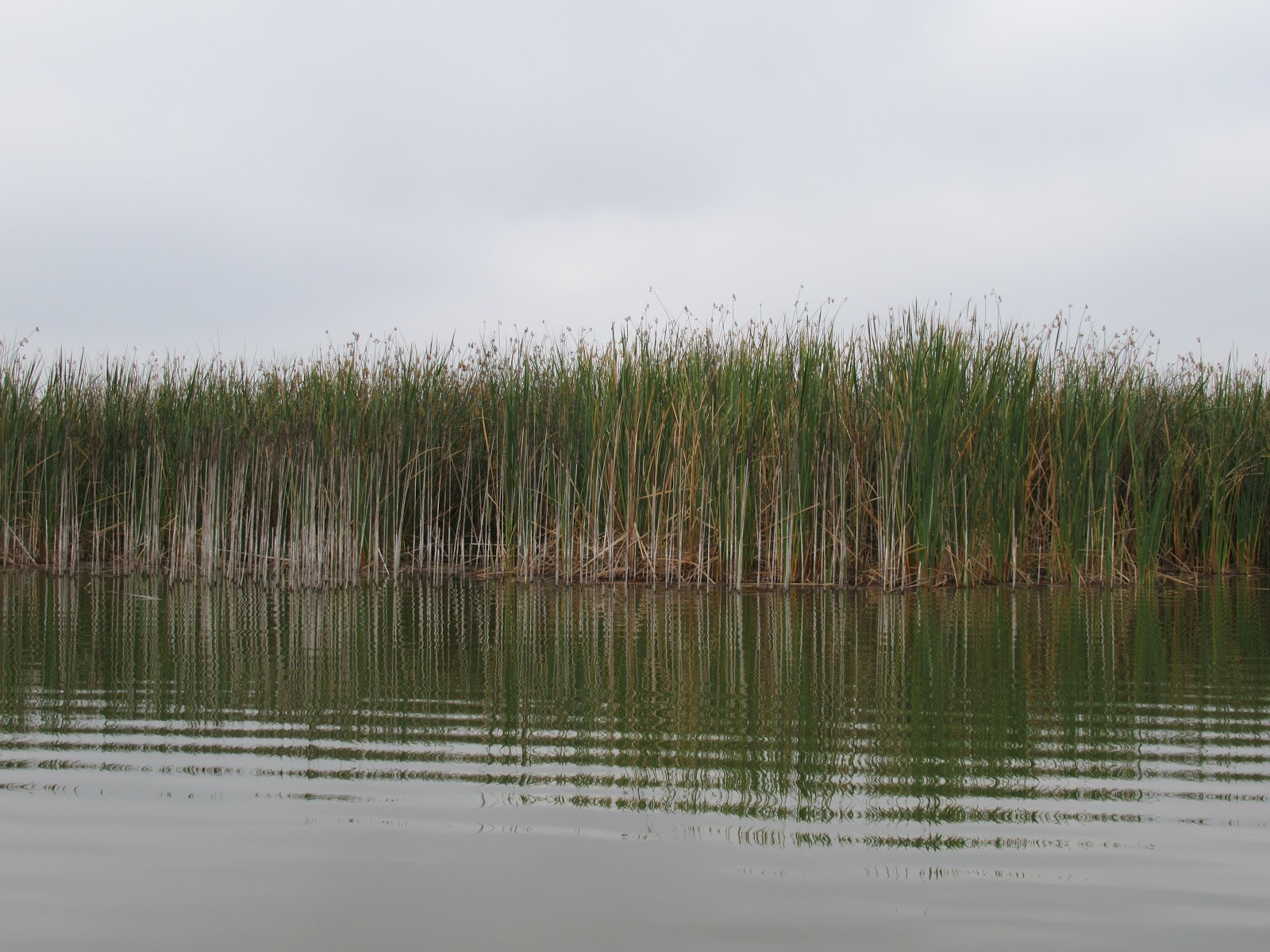
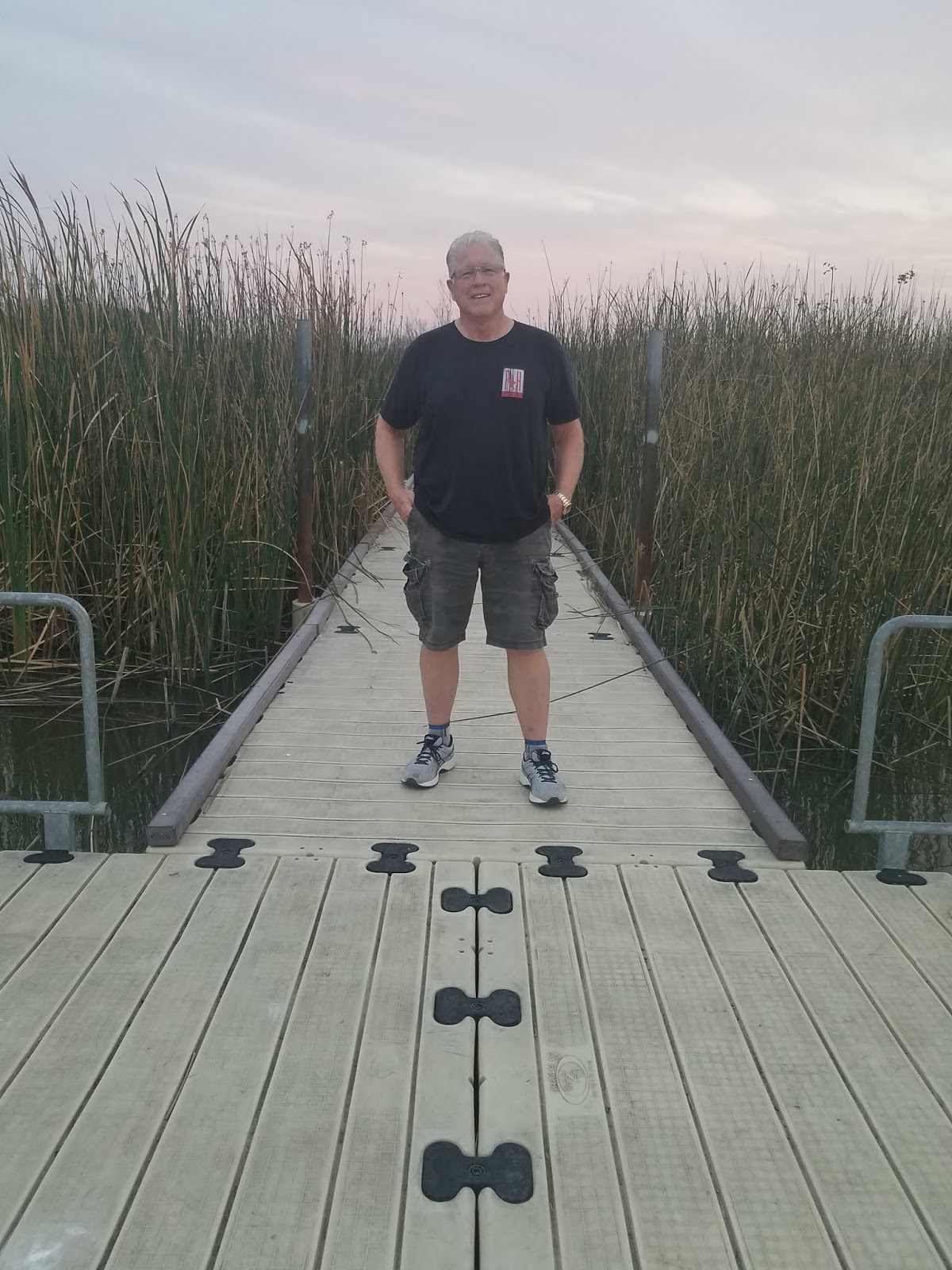
Skipper Sprinkles navigated our kayak through the calm waters. and enjoyed a floating picnic lunch.

In two hours kayaking the lake, we saw exactly one other person. He had a pedal-kayak, which was pretty cool, leaving hands free for fishing.

It is easy to get lost in the many waterway corridors, and it can be hard to find your way in (actually, “in” is pretty simple, “out” is a different story!).
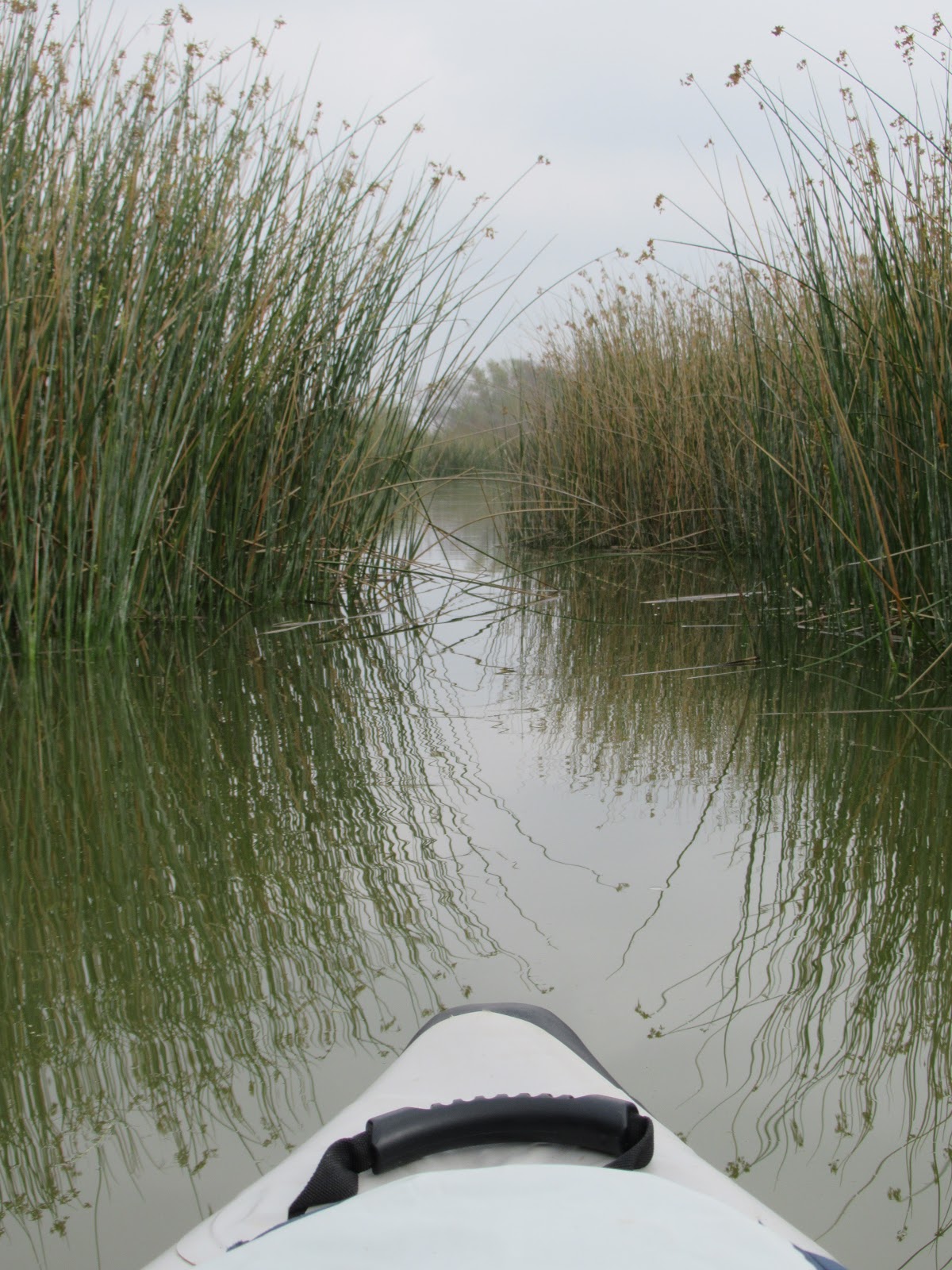
Pelican Pete reporting for his photo op!
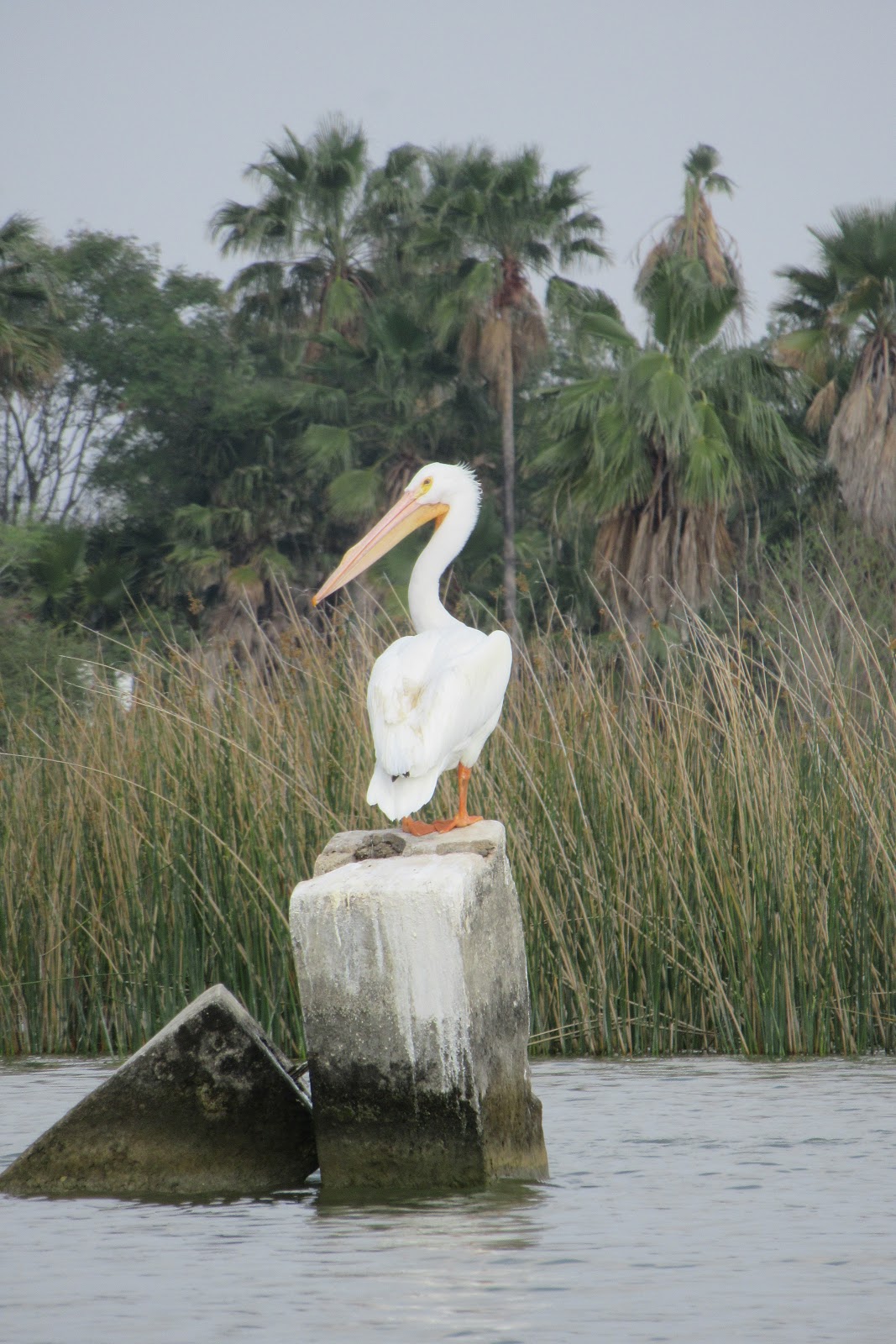
But he soon tired of our scrutiny and left with nary a backwards glance, taking his friends with him.
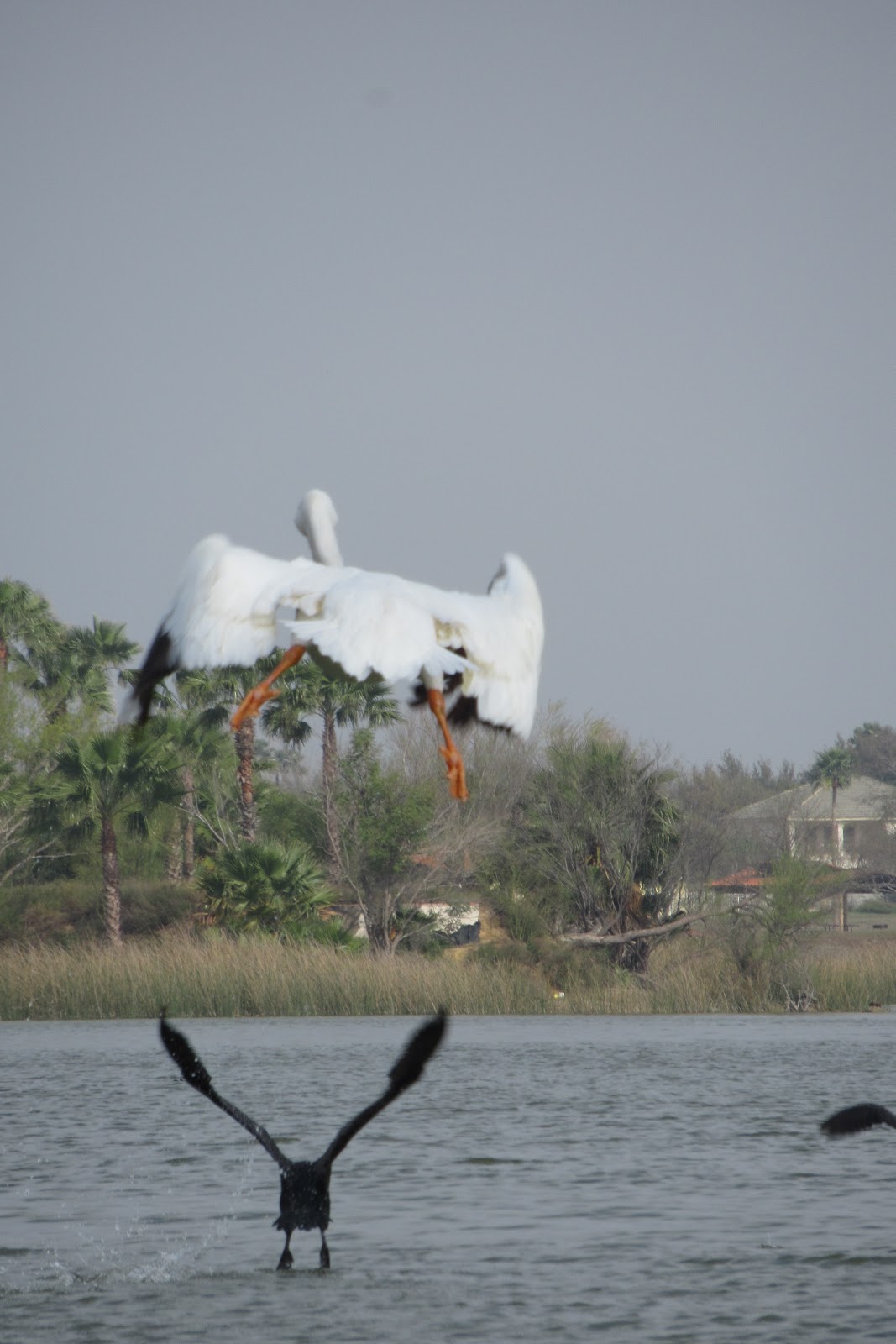
In Langtry, we learned about Judge Roy Bean, who definitely teetered on the border of lawlessness as he dispensed justice as the “Law West of the Pecos.” He lived a very colorful life and became a legend within his lifetime. There is even a (terrible) Hollywood movie about him.
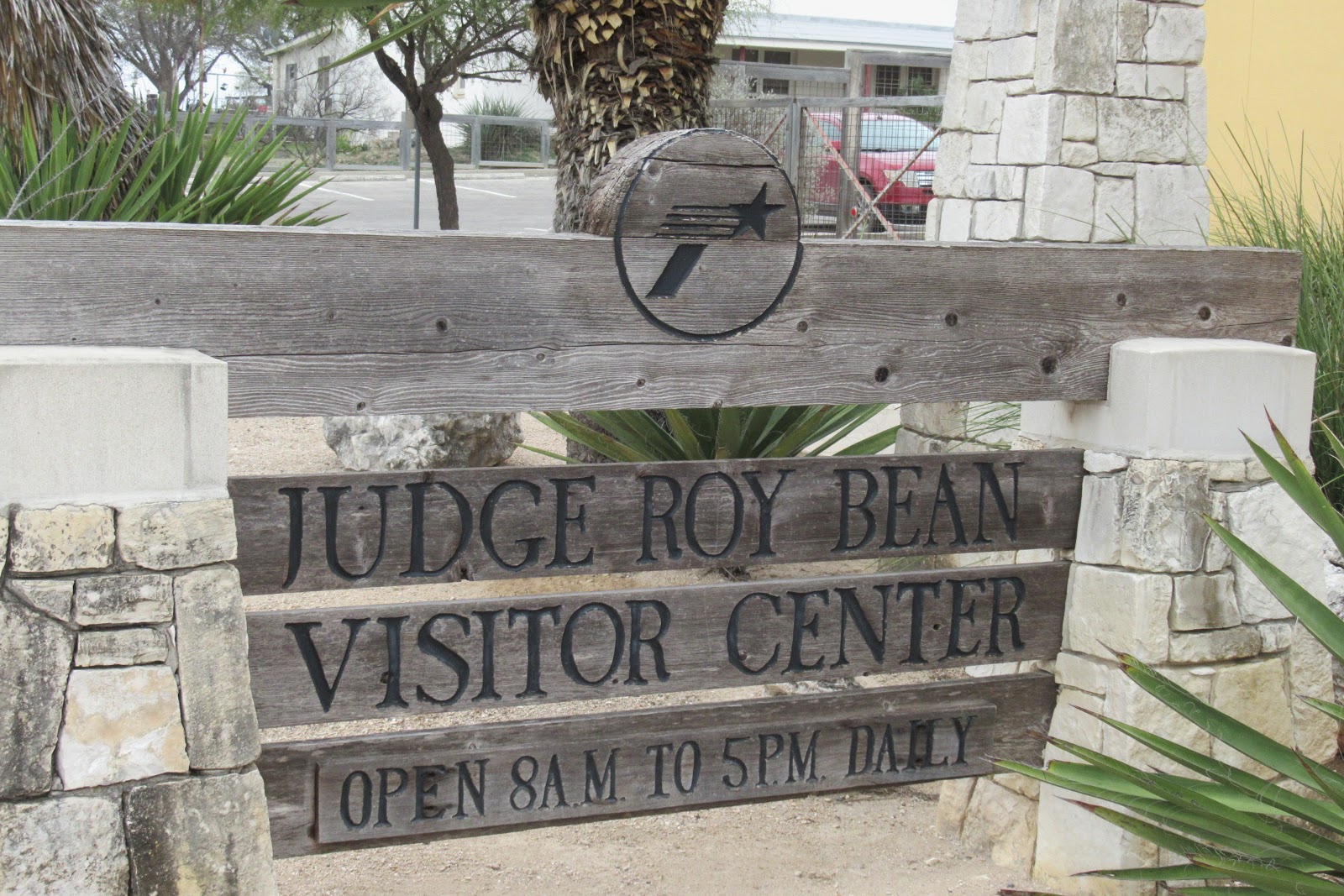
An excellent (and free) Visitor Center run by the Texas Dept. of Transportation was built on the exact site of Roy Bean’s courtroom, billiard hall, saloon, and home, where he effectively removed all borders between work life and personal life. The buildings are preserved and restored in their original locations.
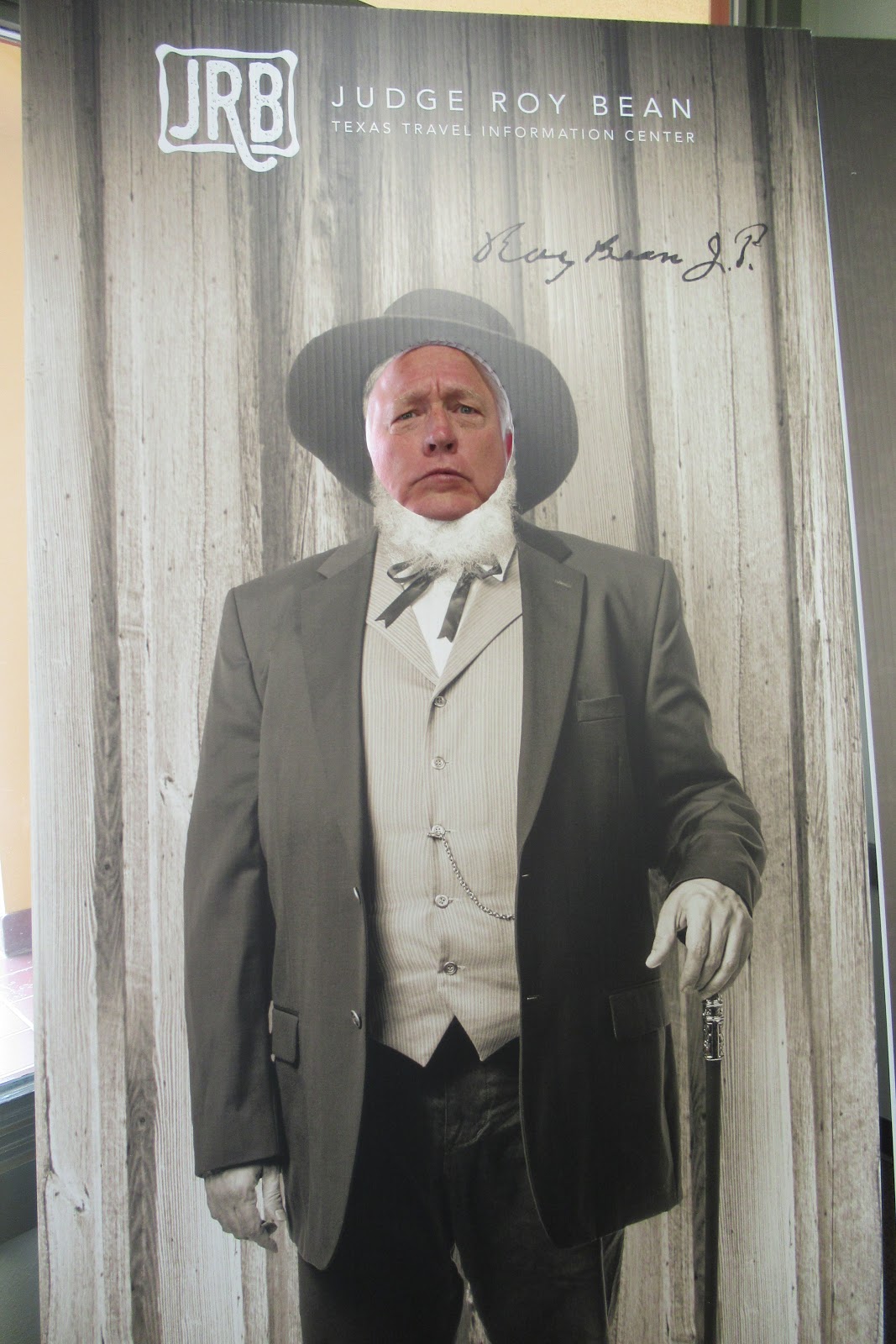
JRB (not to be confused with the other great justice, Notorius RBG) dispensed justice here, but court was held as frequently on the porch as in the building, with spectators grouped around on horseback. His “law library” was a single book, which he basically used as a doorstop, instead consulting his own ideas about what should be done with law-breakers.
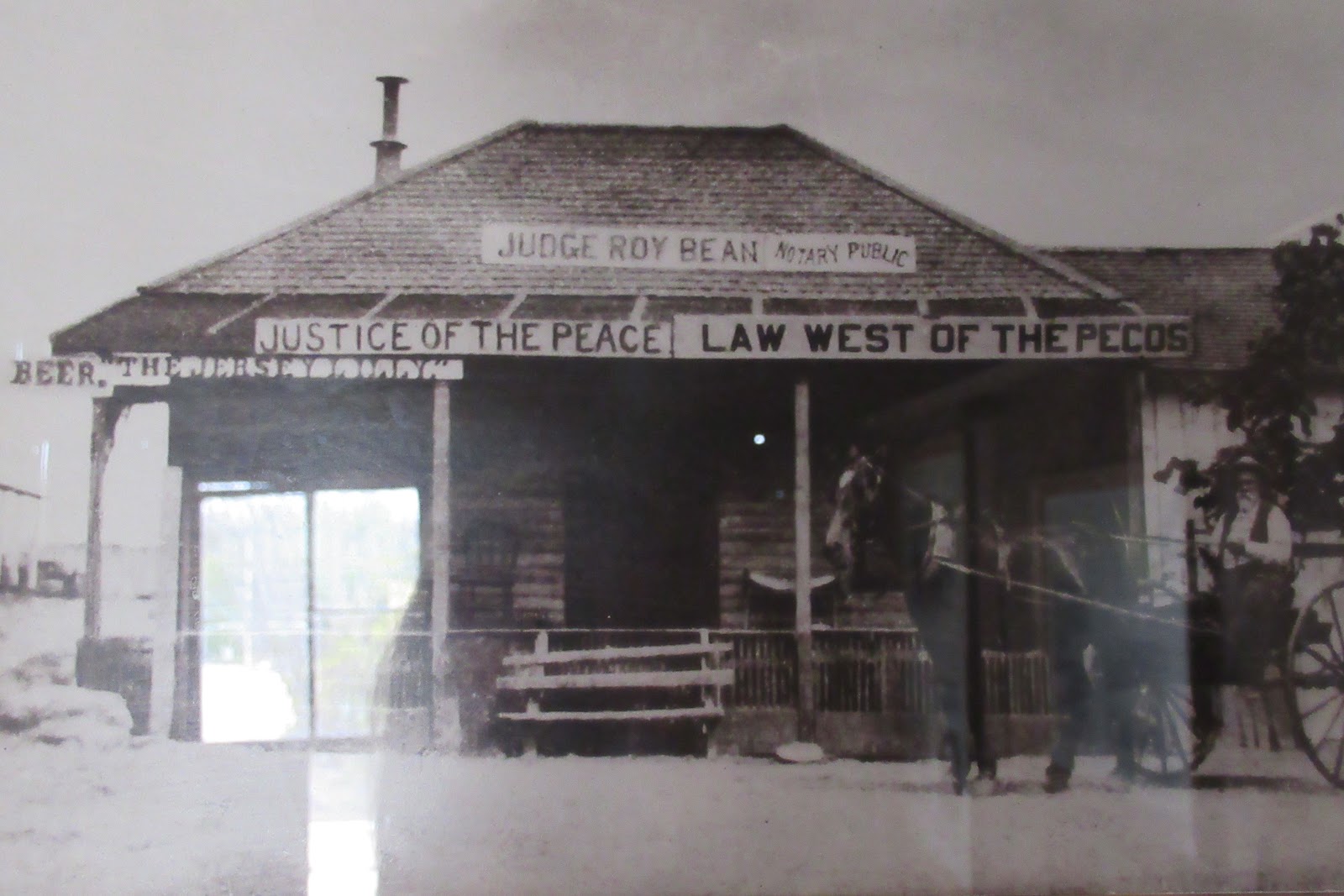
All offenses were deemed fineable, in part (or all) because Bean pocketed all fines and furthermore because there was no jail on the property. If you were too drunk to defend yourself against charges, you were chained to the mesquite tree in front until you sobered up. Bean was also not above breaking off proceedings long enough to serve customers from his in-office saloon.
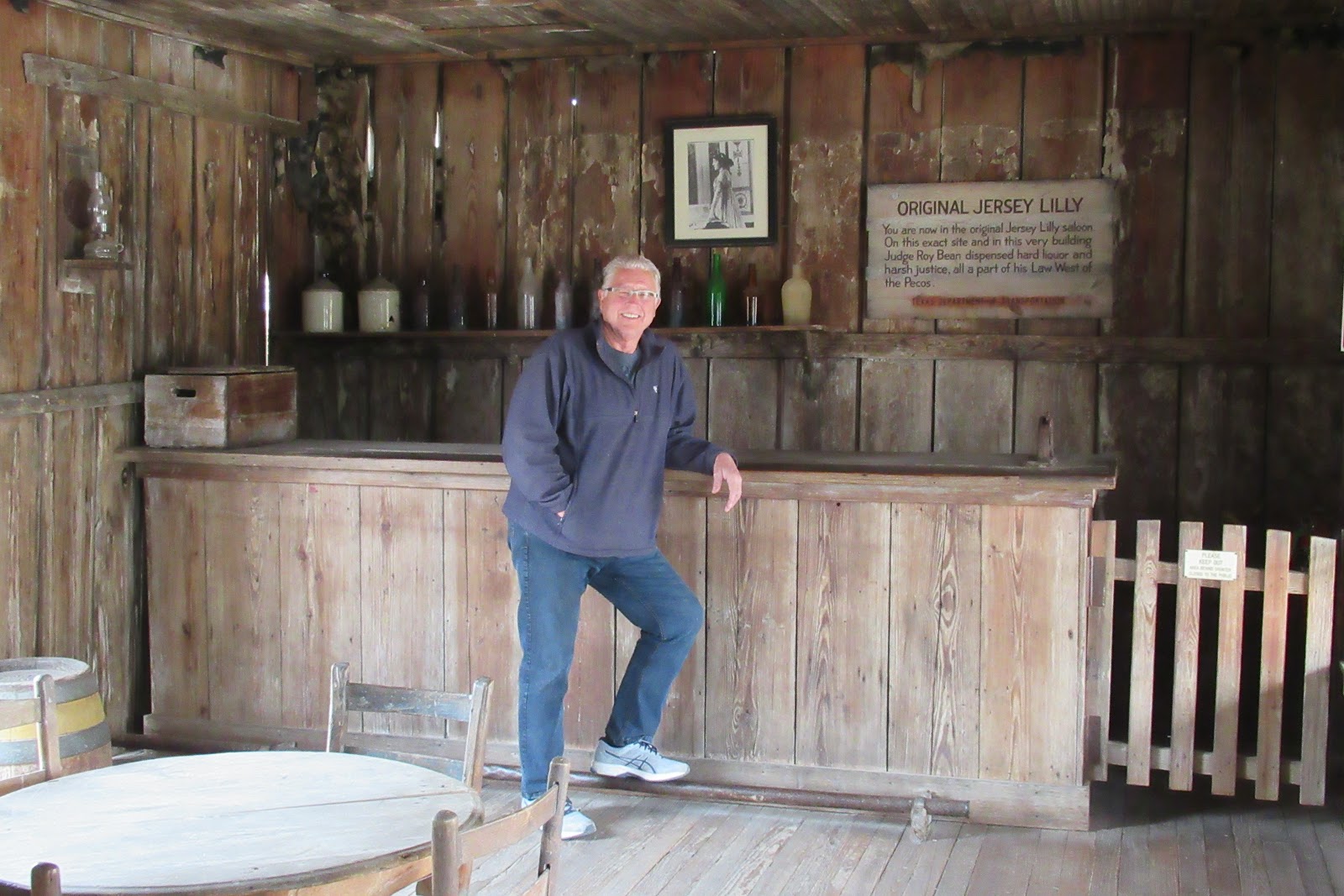
The courthouse building was called the Jersey Lilly (spelled incorrectly) because he was obsessed with the actress Lillie Langtry of Jersey Island, England, for whom he named the town and to whom he spent many-a-night composing heartfelt love letters.
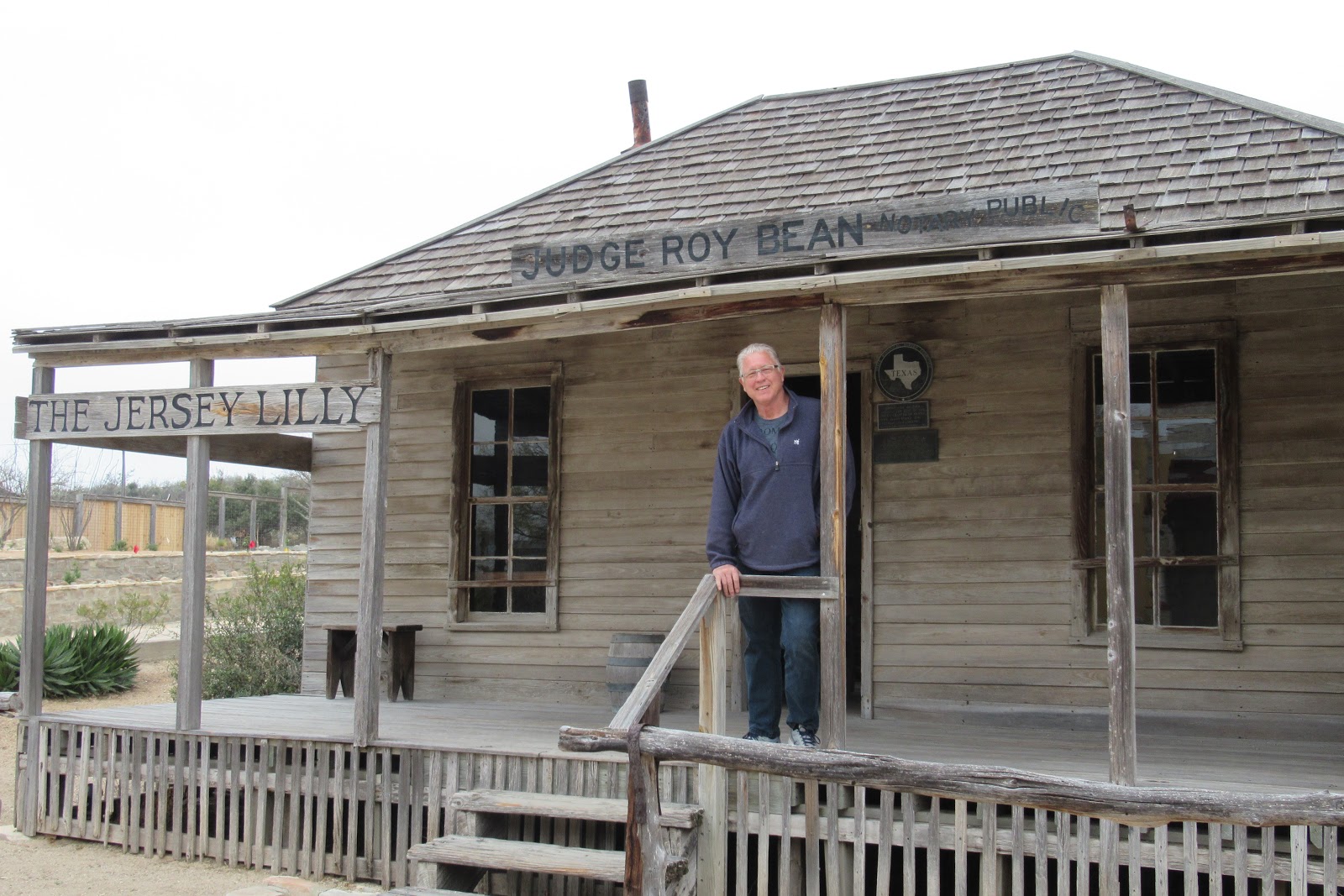
He labeled his home as an Opera House because he thought that with this title, Lillie might be lured to come to his adopted town for a visit and a concert. You might say his love bordered on obsession, though he would never meet her, as she did not come to Langtry until ten months after his death. Perhaps she might have been more open to his overtures if he had managed to spell her name right.

Although she demurred from coming to see him, surely recognizing him for the 1800’s version of a cyber-stalker, she did offer to buy the town a water fountain, to which he retorted, “It would be useless. The only thing the citizens of Langtry don’t drink is water.”

In Kingsville, Texas, the historic and iconic King Ranch’s borders include almost a million acres of ranch land … bigger than the entire state of Rhode Island! It’s not known for sure, but the wavy “running w” logo was perhaps inspired by the snake in the Mexican flag (check it out in the very first photo of this blog post and see if you agree!), and can be seen throughout the property and beyond.


Even the sewer grates on the property have the logo.
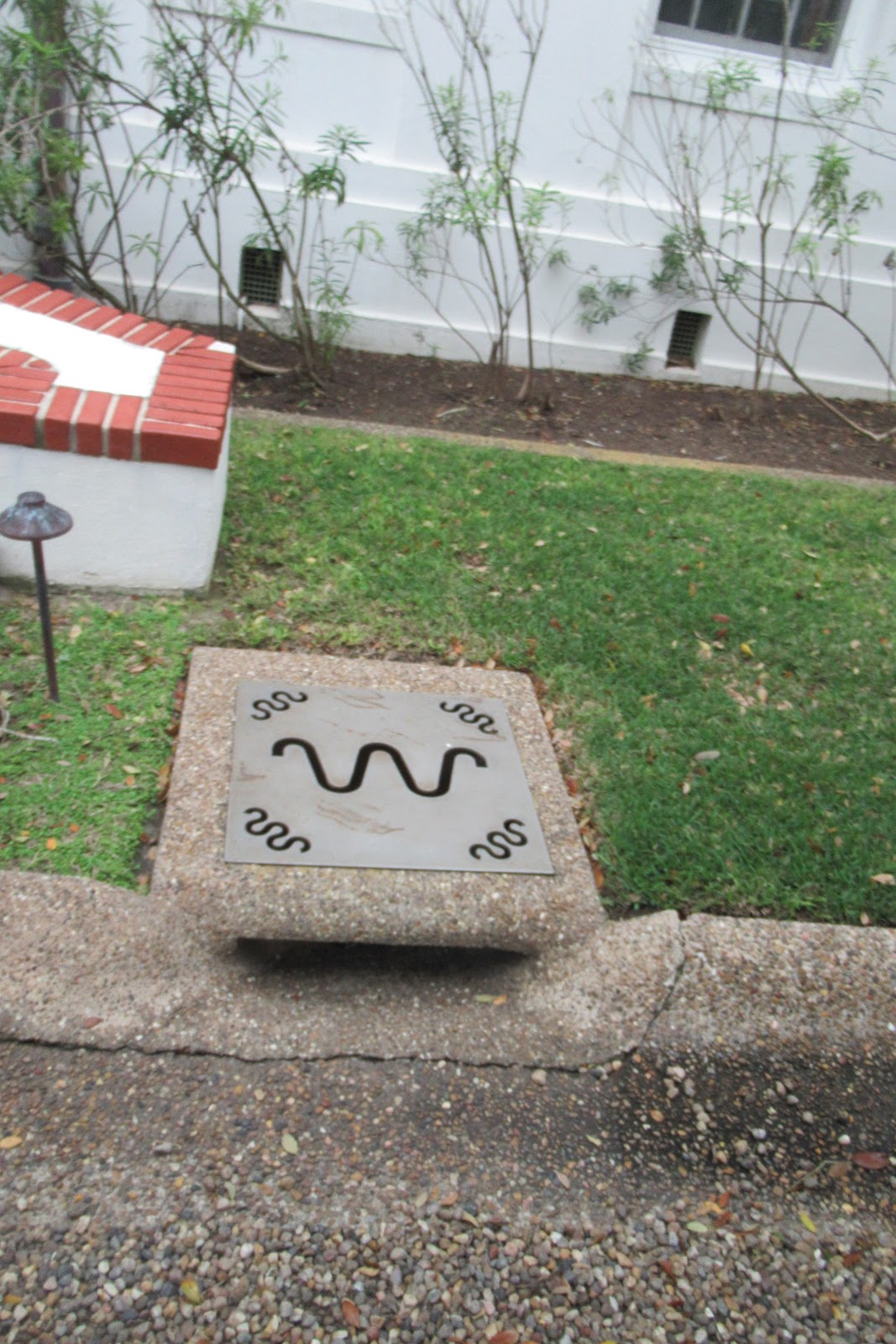
King Ranch is the ultimate rags-to-riches story. Richard King’s immigrant family basically sold him into indentured servitude when he was 9 years old in New York City. He ran away 2 years later and was a stowaway on a ship. He ended up becoming that ship’s captain and eventually helming an entire fleet. Later, he purchased the first portion of this ranch’s land (a Spanish land grant, 50,000 acres of it) for $0.02/acre in 1853.
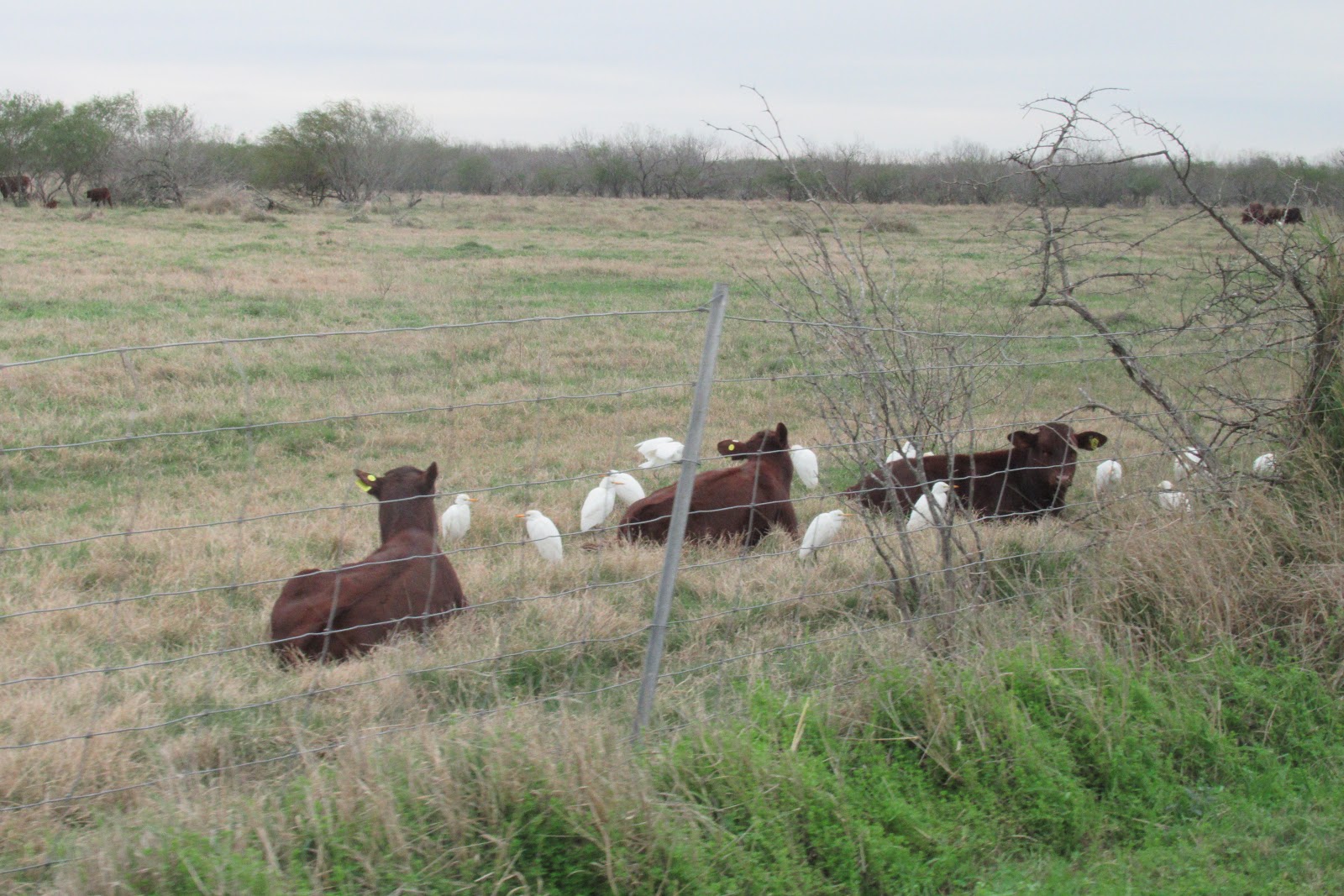
Along the way, he brought the railroad to this area and the rest of his success fell into place. King Ranch is perhaps the most successful ranch in U.S. history. Today, it has four distinct divisions in their almost-1,000,000-acre property, for cattle, horses, cotton, and hunting. Like most successful endeavors, they are also highly diversified into industries like publishing, real estate, and politics.
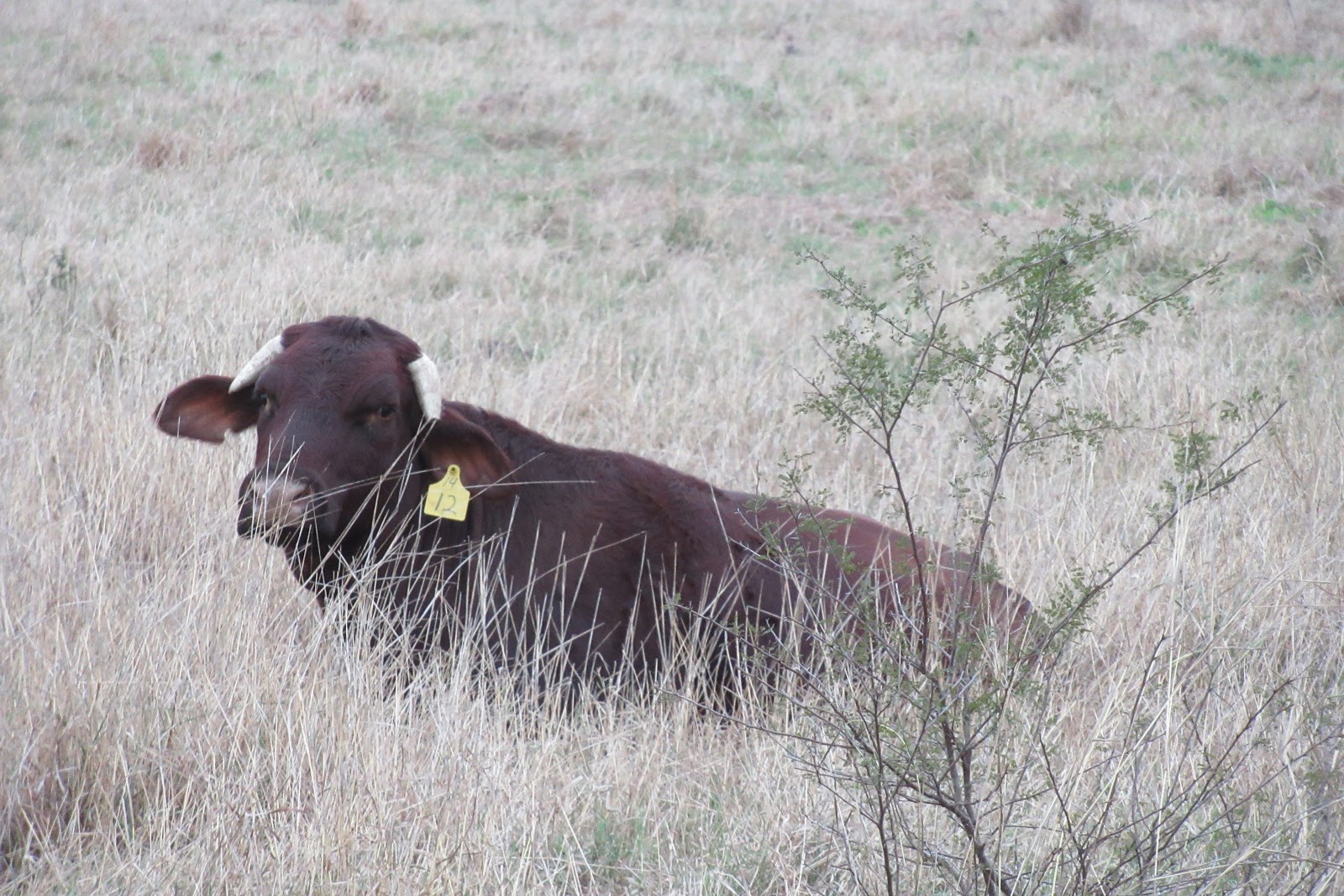
I expected to see throngs of hundreds of thousands of animals during their 1.5-hour long tour, but I guess when you have almost 1 million acres, even great quantities of mammals can spread wayyyy way out. We did see beautiful thoroughbred horses (they bred a 1946 Triple Crown winner, Assault, but he turned out to be sterile, which is how racehorses make their $$$, danggg), Santa Gertrudis and Santa Cruz cattle, deer, javelina, lots of species of birds, longhorn cattle, and wild turkeys on the tour. Looks like some of them even receive a paycheck.

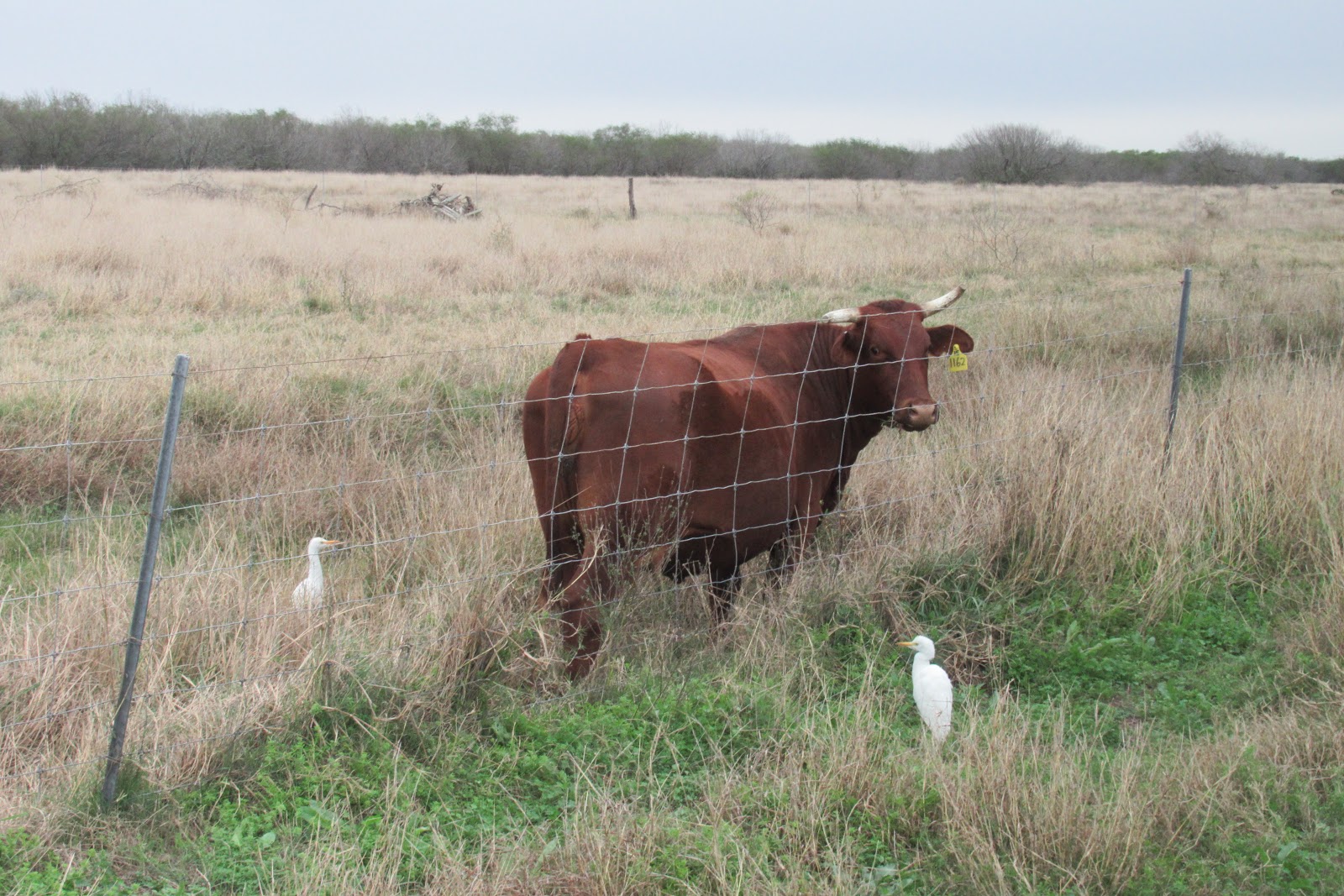
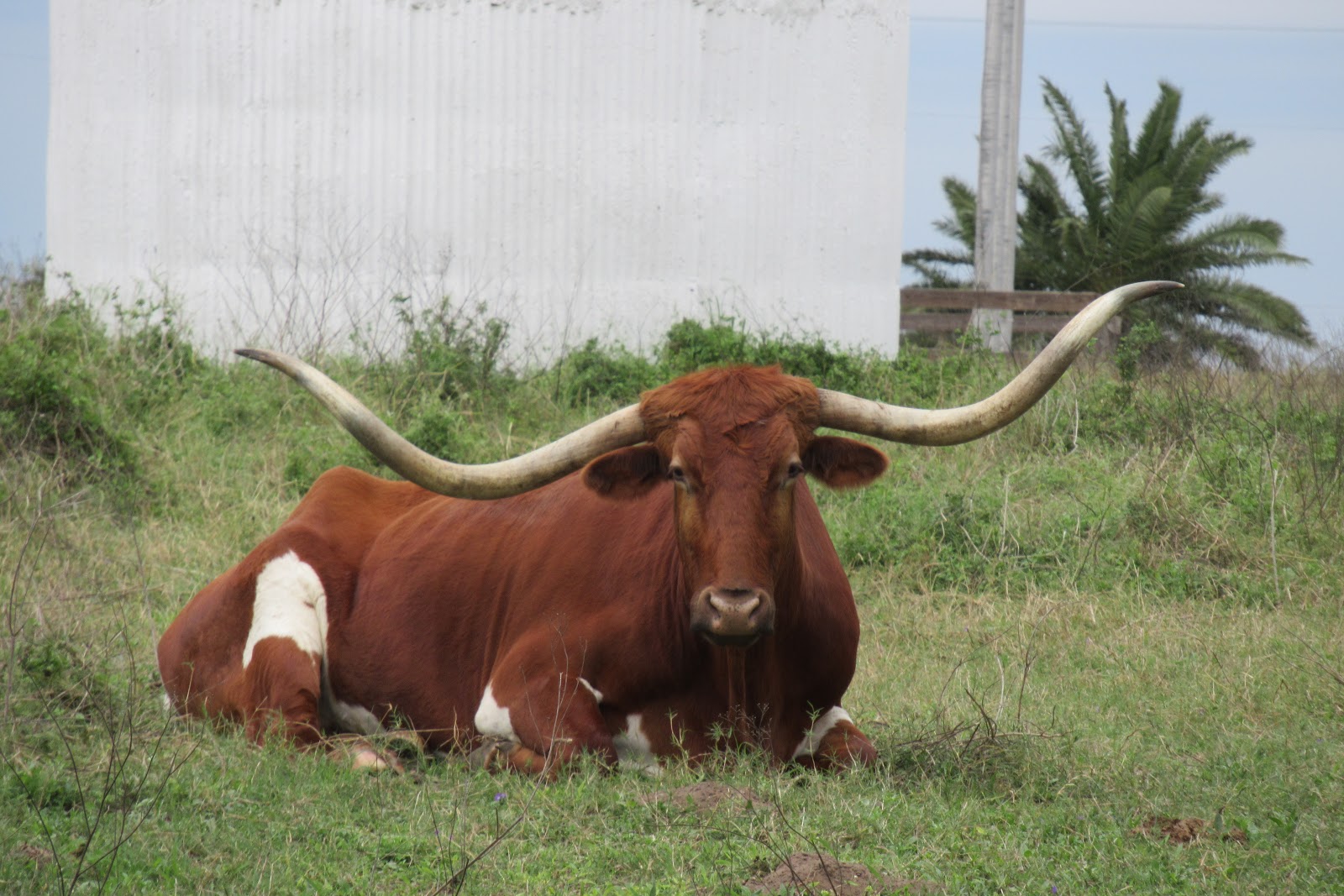
The Ranch is also the proud owner of a 2,000-count branding iron collection, started as a hobby in 1952 by the Texas Southwestern Cattle inspector. Each brand in the collection carefully denotes the ranch, owner, year, and more.
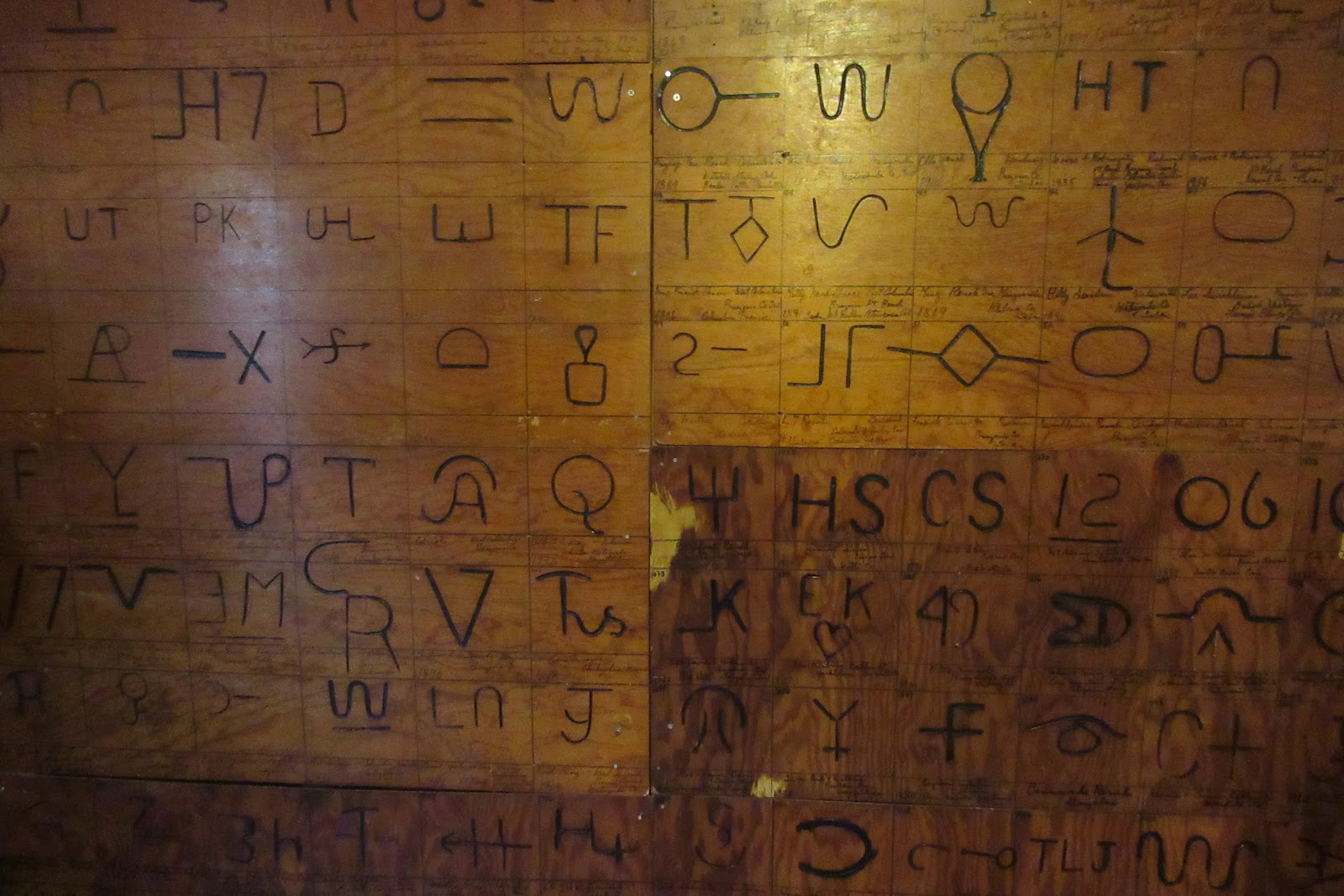
We were tickled to locate the distinctive “06” Kokernot brand, which you may recall from our earlier blog post, was the logo of the owner of Kokernot Field, “the best little baseball stadium in the U.S. (or anywhere else)” (so says Sports Illustrated), and which we recently visited in Alpine, Tx.

The property includes beautiful historic buildings … below, just one of many gorgeous horse stables.
There is also an on-property school for the children of the ranch workers. They have about 275 employees at the ranch, significantly less than one might think for a property this size, but that is primarily because a lot of tasks, like fence building and weed clearing, are subcontracted out. It takes 8 years for the entire property to be cleared of weeds, before they go back to the beginning to start over again. Talk about job security!
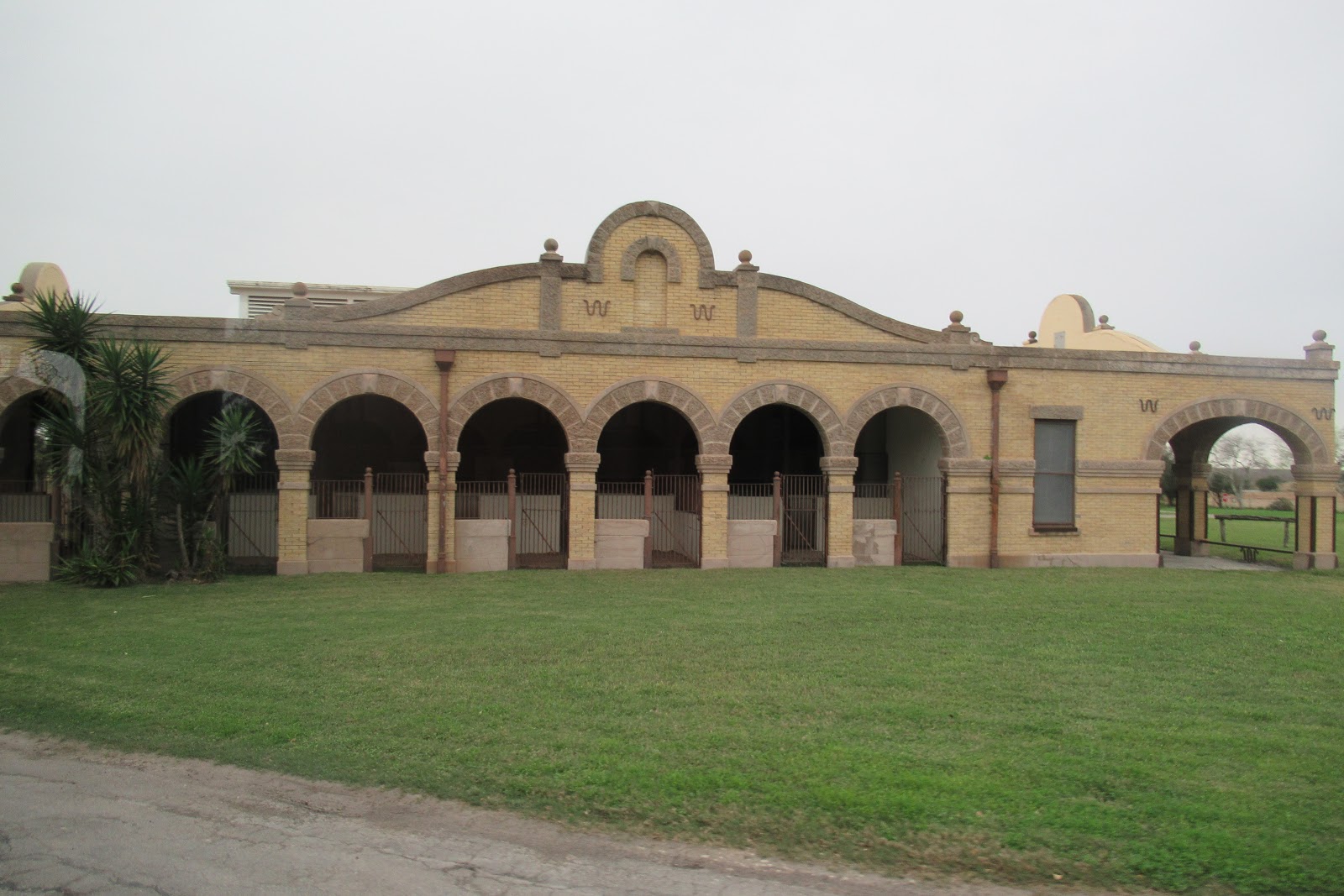
The historic main house has 17 bedroom and 20 bathrooms. Though the house is not continuously occupied today, a staff of 13 people remain on-site to cater to any of the 200+ heirs who can return to the property for a visit any time they like. Though founder Richard King and his wife had 5 children, only one, Alice (who conveniently married the Ranch Manager Robert Kleberg), stayed at the property throughout her lifetime and so only her descendants are the (super-lucky, super-wealthy) heirs. The other descendants presumably work at Burger King, slinging burgers presumably made of King Ranch beef, presumably lamenting the poor choices of their parents in walking away.
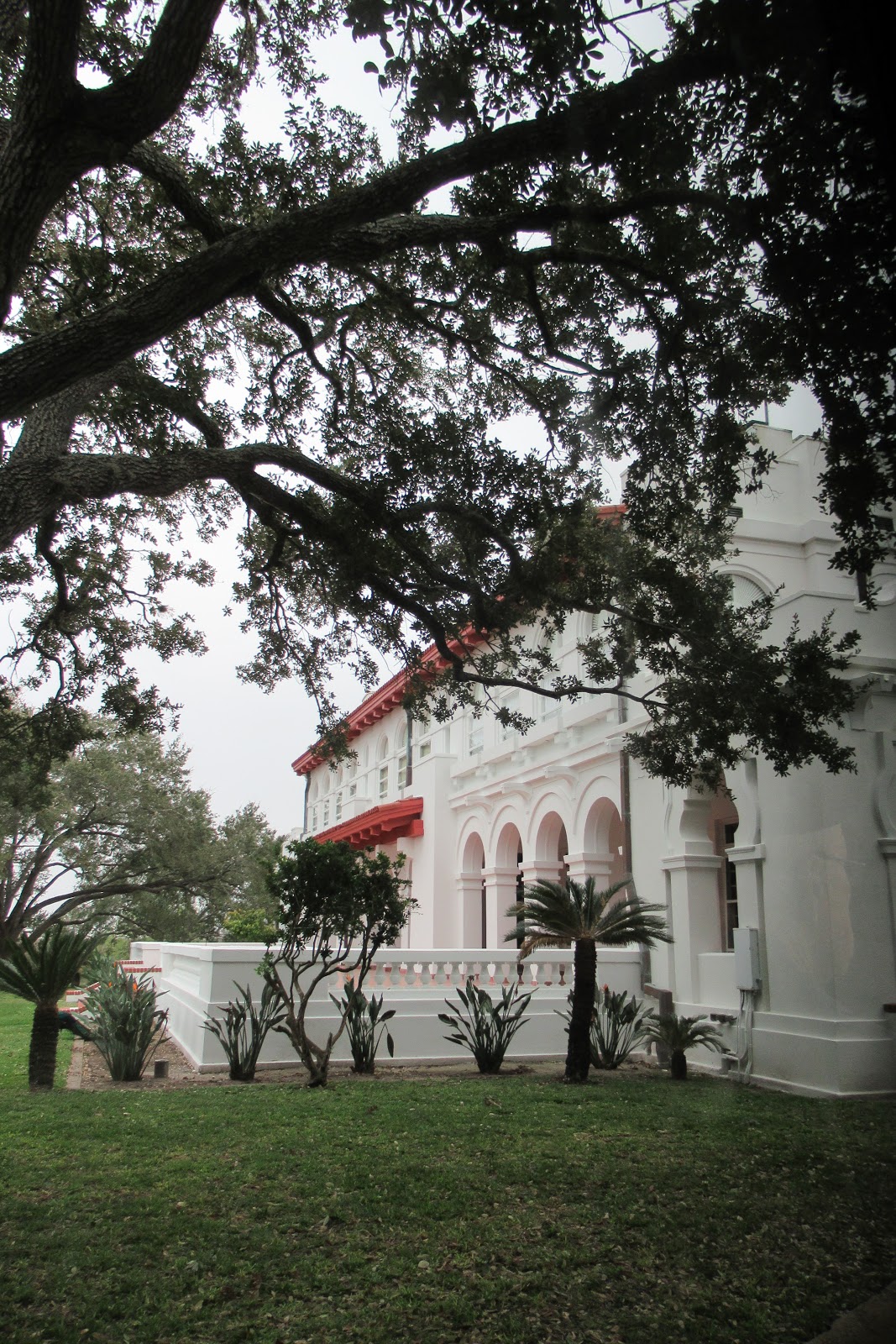
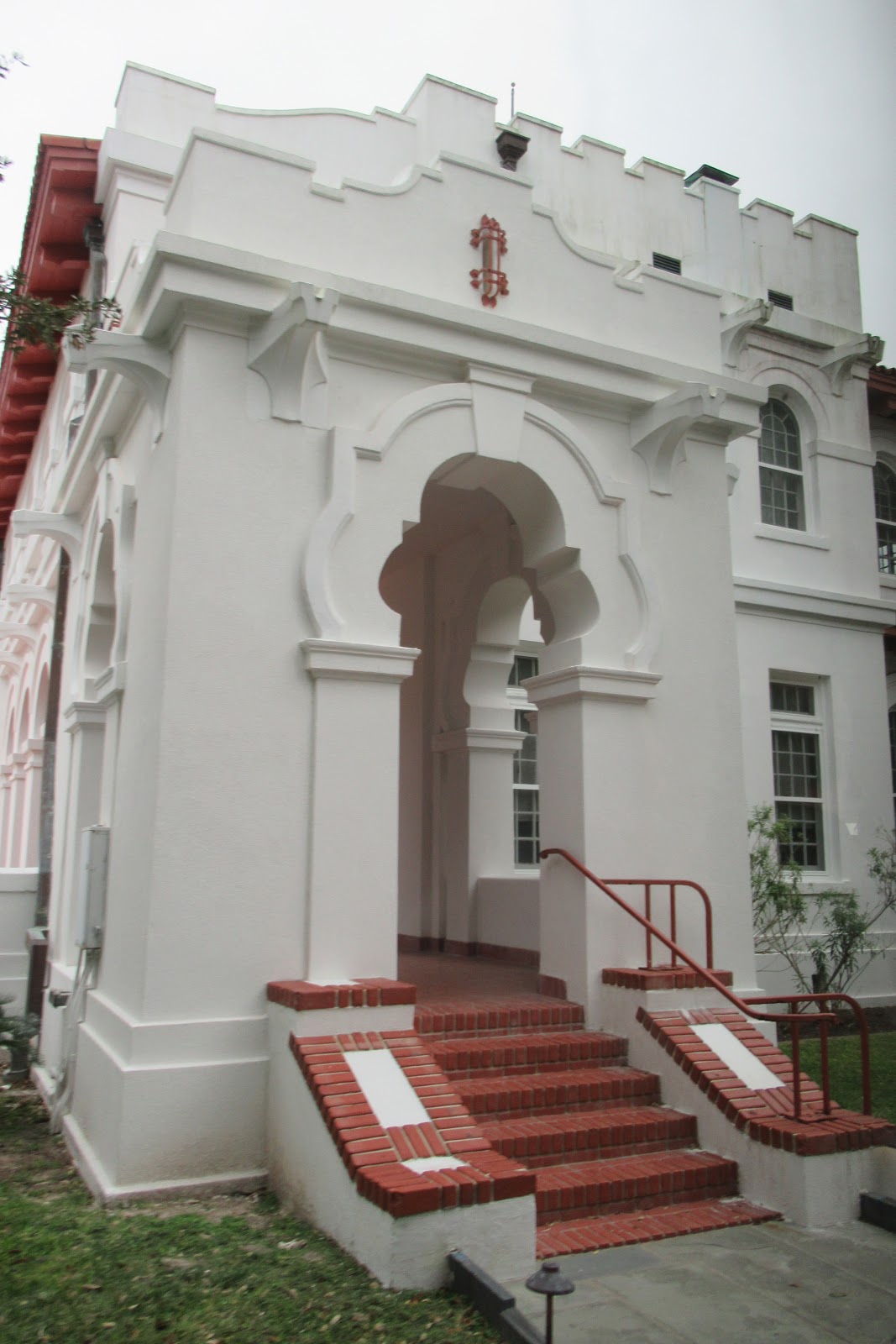
It was at King Ranch, that Tessa Miller met Tessa Miller, and vice versa. Right there in the middle of their Visitor Center! It was an epic moment for us both. I only know one other Tessa Miller, and she lives in New Zealand, so this is the closest Tessa Miller I’ve found! She is bordering on motherhood, due with her first baby in just a few months.

All of these border locations and scenes reminded us how lucky we are to be Americans!
And the state of Texas continues to remind us of independence, free spiritedness, and loyalty.
God bless the USA and God bless Texas, our (temporary adopted) home sweet home!

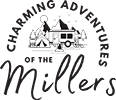

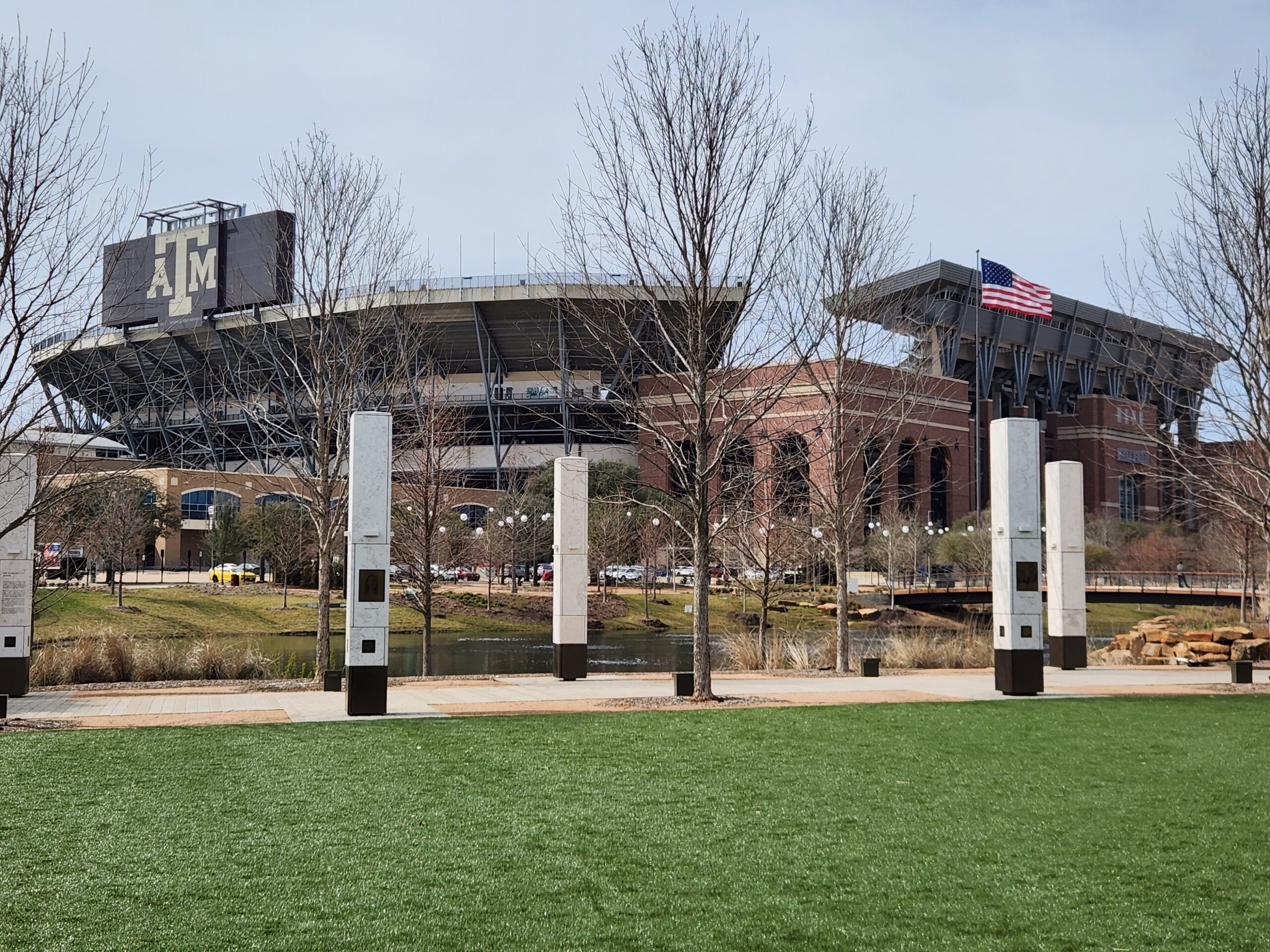
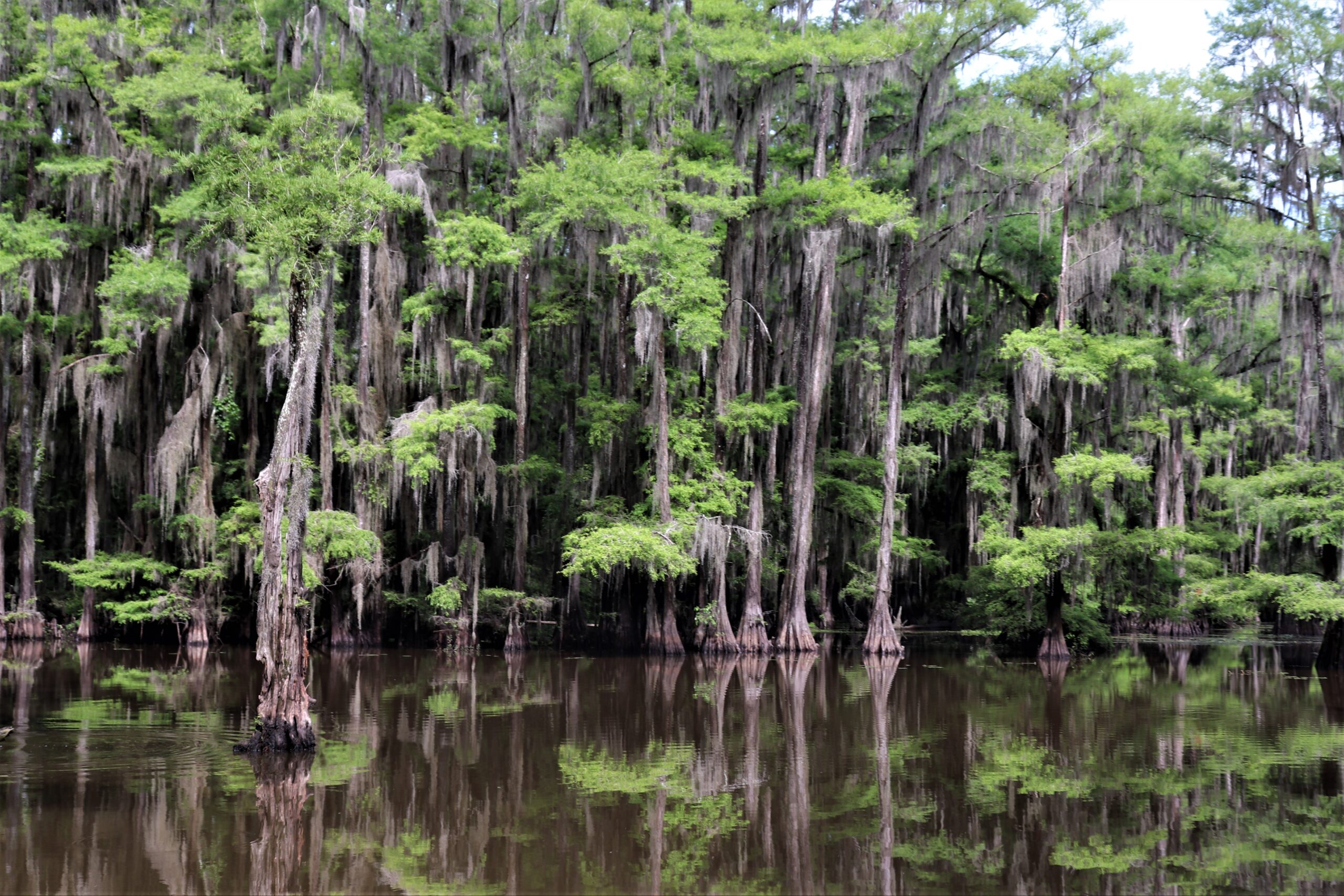
Leave a reply